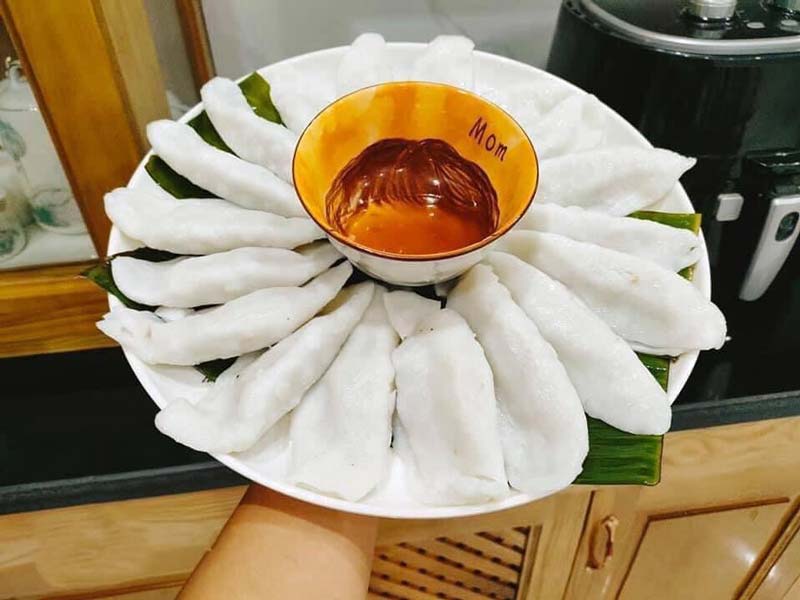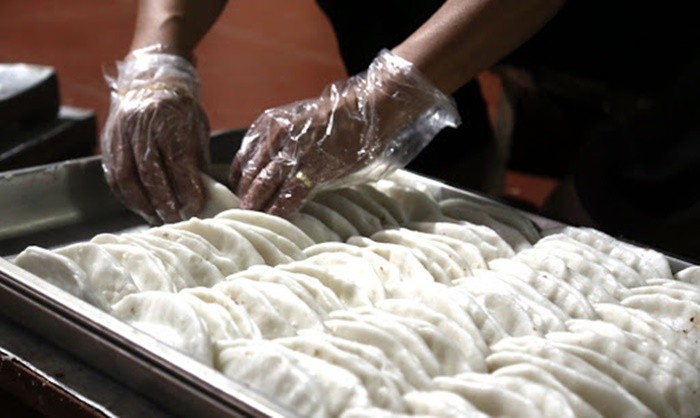Bánh Tai
1. Overview
Bánh tai is a traditional steamed dumpling from Phú Thọ Province in northern Vietnam, known for its distinctive ear-like shape and comforting, savory flavor. A rustic dish rooted in rural life, bánh tai is commonly enjoyed as a breakfast or light meal and often appears in family gatherings, markets, or as an offering during local festivals.
Despite its humble appearance, bánh tai reflects the simple yet thoughtful cuisine of Vietnam’s northern midlands, where each bite is packed with handmade care and local flavor.
2. Key Ingredients & Characteristics
-
Rice flour dough:
-
Made from finely ground white rice, soaked and processed until soft and elastic.
-
The dough is smooth and pure white after steaming, with a soft but slightly chewy texture.
-
-
Pork filling:
-
Minced pork shoulder or belly, marinated with fish sauce, black pepper, shallots, and sometimes wood ear mushrooms.
-
Lightly sautéed before wrapping to enhance the flavor.
-
-
Shape and cooking:
-
The dumplings are shaped by hand into a curved form resembling a pig’s ear — hence the name “bánh tai” ("tai" means "ear" in Vietnamese).
-
Steamed until the dough turns translucent and slightly glossy.
-
3. How to Enjoy the Dish
Bánh tai is best enjoyed hot or warm, and is typically served with:
-
A dipping sauce made from light fish sauce, chili, garlic, and lime.
-
Fresh herbs like coriander or Vietnamese mint may be served on the side.
Each dumpling offers a pleasant contrast between the soft, neutral rice wrapper and the savory, peppery pork filling.
Eating tip: Some locals like to add a bit of chili paste or enjoy the dumplings with pickled vegetables to enhance the flavor.
4. Cultural and Regional Significance
Bánh tai is especially popular in Phù Ninh District and surrounding areas of Phú Thọ. For many locals, it evokes childhood memories and family traditions, especially during Tet (Lunar New Year) or local festivals.
It is also sold in rural markets or small food stalls in the early morning — a common breakfast for workers and schoolchildren.
The dish reflects the resourcefulness and culinary identity of the region: using available ingredients like rice and pork to create something both nourishing and delicious.
5. Where to Try or Buy It in Phú Thọ
-
Morning markets in Việt Trì City or Phù Ninh District: Freshly made and sold in small portions.
-
Traditional eateries: Some family-run restaurants offer bánh tai alongside other Phú Thọ specialties.
-
Festivals and fairs: Especially around Hùng Kings’ Temple Festival, bánh tai is a common street food.



